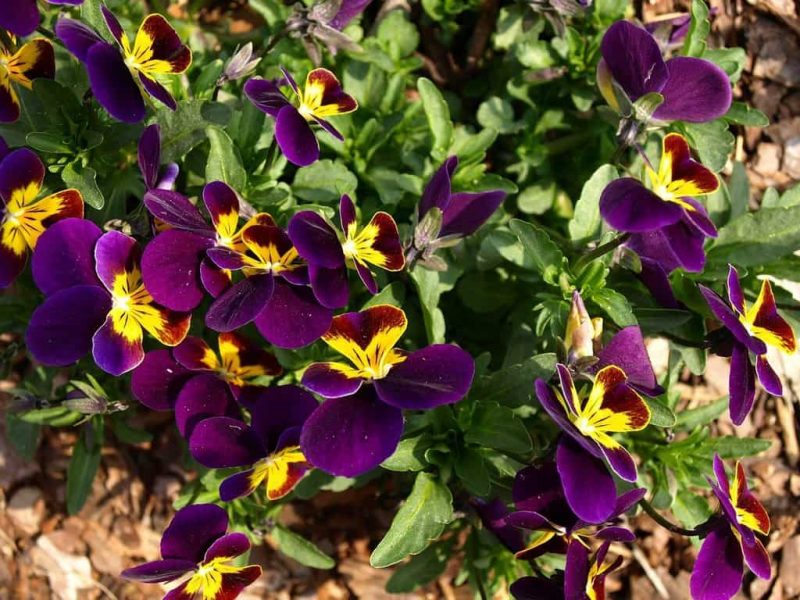If you’re interested in how to propagate pansies, the three best ways to do so is from seeds, cuttings, and divisions. These colorful and compact flowers are well-loved by gardeners to enhance borders and containers, and because they are also relatively easy to grow and maintain. The same goes for their propagation, and the fact that you can choose from three methods makes them more convenient to root and create more plants.
There are many varieties of pansies to choose from, and you can use this to your advantage. Select pansies that will tolerate your location’s conditions or use a greenhouse to start them or protect them if the temperatures get too harsh. And for propagation itself, a controlled environment like the greenhouse would be a self bet to root any plants so they’ll get stronger for transplanting outdoors later on.

Comprehensive Guide On How To Propagate Pansies
1. Rooting pansies from seeds
When to sow pansies from seeds?
According to the University of Vermont, the ideal time to propagate pansies from seeds is 14 to 16 weeks before you intend to plant them outside in early spring. As mentioned earlier, rooting indoors before transplanting is a useful technique to guarantee growth. Depending on your location, you can sow pansy seeds from late January to early February in the greenhouse.
More so, remember that while pansies grow fast, their development from seeds is relatively slow. The range can take as early as a week or as long as three weeks, which is why starting seeds indoors would be beneficial. By providing the ideal germination environment, the seeds can root quicker compared to the inconsistencies outdoors.
How to propagate pansies from seeds?
Similar to other flowering seeds, you’ll use a moist and well-draining seed-starting mix as your medium. Scatter the seeds on the surface and cover them lightly with sand or potting mix. To help with the germination, cover the container with plastic and moist newspapers to create a humid and dark condition.
However, don’t forget to monitor and mist the medium if necessary regularly. Be careful not to let the soil dry or overly wet as these factors negatively affect germination. More so, the environment itself should be at 70 to 75°F, and you should take advantage of growing lights in the greenhouse by choosing the right type and color.
What are the requirements for growing pansies from seeds?
It’s beneficial to start the seeds indoors because it can hasten the blooms in spring. Check your growing zone and start six to eight weeks before the last frost date, or even start planting in early autumn. Once they germinate, remove the covers and transplant the young pansies to another container with an inch of space among them.
The environment at this point should be between 60 to 65°F, but cooler at night. You can also use fluorescent lights 4 inches above the pansies for 16 hours a day to help with growth. You can then start fertilizing with half-strength fertilizer every two weeks after growing sets of true leaves and then transplant them in a bigger container.
2. Rooting pansies from cuttings
General knowledge of propagating from cuttings applies to pansies. But with this specific plant, it’s best to do in fall or late summer. Choose a healthy parent plant and cut a 3-inch section below the node.
At this point, you can do the usual preparation for cuttings before planting. Remove the lower leaves, place the section in rooting hormone powder, and plant in a moist, well-draining, and fertile soil. Some gardeners cover the pot with plastic, and you can apply the care procedures discussed earlier, such as maintaining moisture.
3. Rooting pansies from division
One of the favorite ways of gardeners to create multiple pansies is by diving in spring or fall. Quite similar to propagating from cuttings, select a healthy parent plant to dig up and pull it apart into sections that each have roots. This propagation method is more straightforward than the previous two, and pansies themselves are even easy to divide by hand.
Afterward, you can plant them immediately in the greenhouse or garden. Maintain moisture and keep the divisions from the harsh condition until they establish themselves. However, remember that some pansies might not be compatible with division, so check your plants first if they’re more suitable for other methods.
How To Transplant Pansies From Indoors To Outdoors?
Before growing pansies outdoors, make sure that you have hardened them first to prevent stress. Start in a cool location before exposing them somewhere with sunlight gradually. More so, wait until the outdoors is consistently around 45°F and when the plants themselves have eight leaves before the final transplanting.
Conclusion
Pansies are the easiest plants to grow, and every gardener knows that you can never have too many pansies. The three best methods on how to propagate pansies are essential to creating more of these flowering plants. They are rooting from seeds, cuttings, and division, and all of them are newbie-friendly to do.
More so, a trend you’ll see in these propagation methods is that after the initial stage of sowing the seeds, taking the cuttings, or dividing the plant, the next steps are similar in maintaining the young plants. You’ll also benefit more by starting pansies indoors to guarantee their development before finally transplanting outdoors permanently.
